Finishing Your Projects Reduces Stress
*First, a 2023 Update: My wife and I sold the home we could no longer afford in 2018, and moved three hundred miles to a town with more reasonably priced real estate. We bought a very small house. We are not young. It was brand new, which was great; doing repairs on the old place just about killed me. However, the new place literally sat on a dirt lot. No grass, no plants, no trees, no fence- just fire ants and a depressing, expensive to-do list a mile long. There was also the pressing problem of mitigating the snow-slide drainage issue on both sides of the house which, if left untreated, could cause significant moisture damage to our foundation. Finally, there was a driveway issue. You get the idea.
I wrote this post in 2019, one year into trying to make the yard livable. Believe me when I tell you I understand what it feels like to be overwhelmed, exhausted, and trying to find less expensive ways to do everything. You’ll find this original post at the end of this page.
After five years, we’re mostly in a maintenance mode. We have a cute little yard we can enjoy, and decided that we’re never going to be young enough to shovel rocks again. I learned a lot in the process, the most important thing being this:
Facing too many unfinished projects at the same time is hard on your soul.
Sometimes, as in our case, it’s unavoidable for a while.
Still, let me encourage you to take a moment and think this through. If you have several projects going at the same time, read on. You’re not alone. What can you do to move past the depression that comes with an overwhelming situation?
Let’s Talk Projects
First, acknowledge the problem. Do you love coming home to your tiny house? When you see it do you get a warm, cozy feeling? Or do you come home and see all of the projects you have yet to complete? The way we feel about our home can unconsciously affect your mental state.
How would you feel about coming home to the house in this photo above every day? How long has it been since that extra room was added on the back?
Undone Projects Can Affect Our Mental State
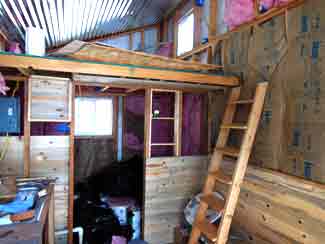
Our homes should be our sanctuaries, a place we can relax and rest. But, if undone projects and clutter pile up, your stress levels go up with it. Studies have shown that living with the stress of undone projects can raise the levels of cortisol in our body, also called the “stress hormone.”
Chronic stress can lead to many negative health problems like fatigue, irritability, headaches, intestinal problems, depression, and more. Finishing your projects can alleviate a lot of these health issues.
Coming home to an undone dwelling everyday can erode your self-esteem. Your mood can get downright surly. You feel exhausted and despondent.
Perhaps you started a kitchen remodel and ran out of steam. You’re not a plumber or an electrician and installing cabinets is way beyond your pay grade. You’ve been living with a demolished kitchen for two years now.
The situation can get so depressing that a nice glass of wine helps. If the project is left undone eventually several glasses of wine every evening are required. Going to work with a hangover can affect your work. Now you’ve got two problems: unfinished projects and a headache that won’t quit. At least.
The Work-Around
Overcoming the Psychological Obstacles
and Feeling Better About Everything
Split your project into smaller, easy-to-accomplish tasks
This is how I worked the process to eventually get them all done and keep from losing my mind. Maybe it will work for you.
First, stop looking at this as one giant, insurmountable hurdle. Instead, break it into pieces. Take a legal pad and get ready to make a list of all these projects. You’re going to want to leave a few lines of space between each task. You’re going to need room for notes.
Then, try to list each task in order of importance. What needs to be done first? What can wait?
Then, in the lines between jobs, write down the materials, time, assistance, and money you’ll need to accomplish each one. You may be able to knock a few items out simultaneously (like hardware store runs) without taking on two whole projects at one time. Or you’ve got your unemployed nephew who owes you money, and he’s here next Saturday. Let him shovel the rocks for a couple of projects. You get the idea.
I know that, at this point, it seems daunting. Don’t give up. Instead, do these two things:
- Put a B in front of the big jobs and an S in front of the small jobs. The small jobs are ones you can do almost anytime. You can knock them out in a few hours over a weekend, and you’ll be able to cross them off your list. This feels great!
- For the big jobs, JUST DO ONE AT A TIME. Don’t try to combine them with other big jobs. Do the most important one (that you can afford) first. You can celebrate when it’s over by crossing it off your list.
Keep the list. Yeah, you may have to add projects. Welcome to home ownership! The point is, the list will do two great things. Instead of being a mountain in your mind, you have this broken down into a one-thing-at-a-time manageable agenda. Second, seeing those things crossed off your list is so encouraging. You are getting it done. You can see it. You know it. It’s good for the soul.
A completed project can bring a sense of pride and accomplishment

I watched this tiny house being finished at The Peoples Tiny House Festival in 2019.
Arriving to a “cute” finished abode can raise your self-esteem and give a warm sense of pride. You might even want to invite people over for game night.
Design and decoration can boost productivity
The correct design and decoration of your space can actually boost your productivity and creativity. Color and lighting also play a part.
Finances, the fly in the ointment
Finishing your projects will raise your level of self-worth, allow you to relax at home, and give you a sense of pride in your dwelling. However, lack of finances can be too great an obstacle to overcome.
I am not minimizing this obstacle. It might be keeping you from moving forward. A gallon of paint can cost $40.00-$100.00. At minimum wage, that means working many hours for a can of paint. After paying for food, mortgage or rent, medical insurance, car payment, gas, daycare, utilities, etc., the idea of spending money you don’t have for a project that can wait is daunting. All I can suggest is that you tackle the cheaper projects first. Just crossing the small tasks off your list will boost your morale. Save a little for the bigger ones as you are able.
Keep your eyes open for opportunities to maybe barter work for building supplies or contractor services. Take advantage of free instructions on YouTube,™ and our Tiny Life Consulting website, building material reuse stores, Habitat for Humanity ReStores,™ and local recycling centers: anyplace you may be able to find used supplies.
Scrutinize your expenses
That’s what we did. We’ve always been pretty thrifty, but we dug deeper. We sold our second car and now get by with one ten year-old Chevy. Once a week we get take-out or eat at an inexpensive restaurant; we eat from home the rest of the time. Due to lifestyle changes long ago, we no longer have to budget for alcohol or wacky weed. We keep everything longer and before we buy anything, we ask the question:
Do We Really Need This?
If not, we don’t.
From My Original Post in 2019: One Year Into Downsizing
We lived in a 2800 sq./ft. house. We used it to raise our kids as well as running a business out of it. However, it got to the point where it needed a new roof, new siding, and new windows. We couldn’t keep up. We sold the house and our business, took the equity and bought a small, brand new house, in a different town where real estate was more reasonably priced. The brand new home didn’t need any upkeep but the yard was a blank slate.
We budgeted for finishing the yard, adding a larger deck and a fence.
The project list looked like this:
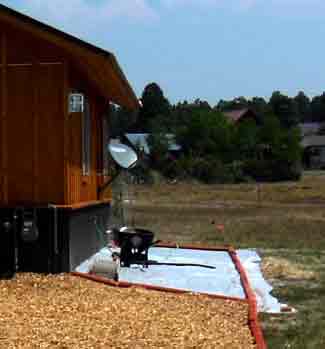
- Get the yard ready for winter: The side yards were only eight feet wide and would be snow sheds. Snow would destroy anything planted there so I laid heavy plastic and covered it with rock. This would help drain the melting snow away from the house. I hired a local guy to help me move the rocks. The front yard needed to be set aside so I quickly covered it in weed fabric and a truck load of wood chips.
- We planted trees to get them started as soon as possible. We could only afford small trees.
- Build a fence around the backyard: I hired a fencing company to do this mostly because I was not able to dig the holes for the fence posts. It came out really nice but was unbelievably expensive. The expense was budgeted for so the money was spent and that project completed.
- Build a larger deck: I hired the guy who built the house because I wanted it to match the existing deck. He did a professional job and it looks great. The larger deck allowed us to get the hot tub off the temporary pad we had put together in the yard. Again, crazy expensive, but we had budgeted that cost, so the money was spent.
The “fly” in our plans
Winter hit and brought all outside projects to a halt. Living expenses, as life would have it, were more than expected. Health insurance was the main culprit in depleting our cash reserves. As winter wore on the backyard budget money faded away. 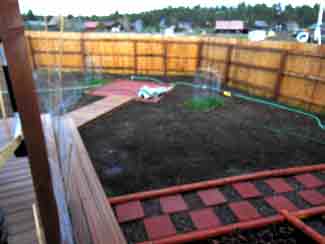
By spring it was clear that we would have to do everything else on the cheap. Luckily landscaping and growing grass is something I know how to do.
I used the old hot tub pad to create a fire pit area then used the scraps from the deck to add steps and a walkway to the fire pit.
An additional walkway was created with inexpensive materials from The Home Depot. Those concrete pavers, usually $4.49 were on sale for $1.00 today. I got some of the landscaping timbers for free.
Click here to view the latest online promotions at The Home Depot!
By now a whole year has gone by and my list is still long:
- Make the soil decent enough to grow grass: This meant purchasing six yards of mulch, spreading it evenly on the yard, then roto-tilling to a depth of six inches. I borrowed a rototiller from a friend and he was nice enough to deliver it and pick it up when I was done.
- Seed the yard: Spread the seed; rake it in; keep the ground moist for three weeks; fertilize; seed the blank spots again.
- Create a flower garden along the fence: Plant perennials so they come back every year. Put down weed-guard fabric and a border.
- Install a drip watering system. I used a package deal from The Home Depot to get the best price. Just $19.95*).
New tasks kept being added to the project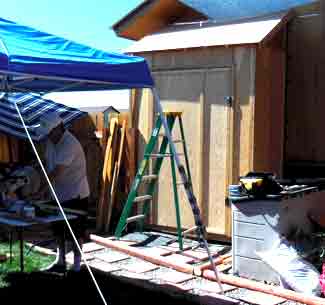
It became apparent that we would need a shed for the lawnmower, yard tools, and extra storage. I designed the shed and estimated the lumber would cost about $300.00. So far the materials are around $700.00.
Then I found out the house, fence, and shed would need another coat of Penofin ($220.00 per five gallon container). I estimate it will take three five-gallon buckets to do the job.
Oh, and I need to run a dedicated electrical outlet for the hot tub.
I decided to come out of retirement and get a job to stem the flow of red ink.
So, the push to finish the back yard project continues. Winter will be here again soon.
Pushing on to Finish Your Projects
“I will get this project done,” he said determinedly. Because I broke the to-do list down into several smaller projects I feel like I am making good progress. I might have to forego a few fall camping trips to get it done before winter. Not happy about that, but what do I want more, camping trip or finished project?
Pick a Project to Complete
Make your project size reasonable. Rather than say, “I will get this remodel done,” pare it down to something you can do more easily. “I will complete the bathroom by September.”
- Set a “complete-by” date goal. In the mobile home project above the date might be “before it’s too cold to paint,” or Oct 21 for example.
- Set a start date. Set aside enough time to complete the project.
- Make a materials list. Can you afford siding or only paint? If money is tight pare down the project size even more: “I will get siding on this one wall by the end of the month.”
- Price out the materials. Look for the best prices. Start saving or get financing.
- In your mind make the determination, “I’m going to finish this project. I will need to do these things and it will cost this much. I will get it done.” Do not begin any other project until this one is done. Do not spend your budgeted money on any other thing.
- Make a list of tasks that need to be done to get to the finished product. Check each item off the list as you move forward.
- Make sure you have the proper tools and know-how.
- Enlist helpers as needed. Schedule helpers for certain days. Hire specialists and trades as needed.
- Buy the material and get started.
Force yourself to complete your projects. Keep at it even when you don’t want to.
You’ll be tired. You might be broke. But you’ll be happier by finishing your projects.
Remodeling an RV or travel trailer can be one messy project. You can find yourself up to your ears in debris. If you get really bogged down, clean up your work space, put your tools away, and rest for a bit. Make a new plan and start moving again. Here’s more info on remodeling an RV.



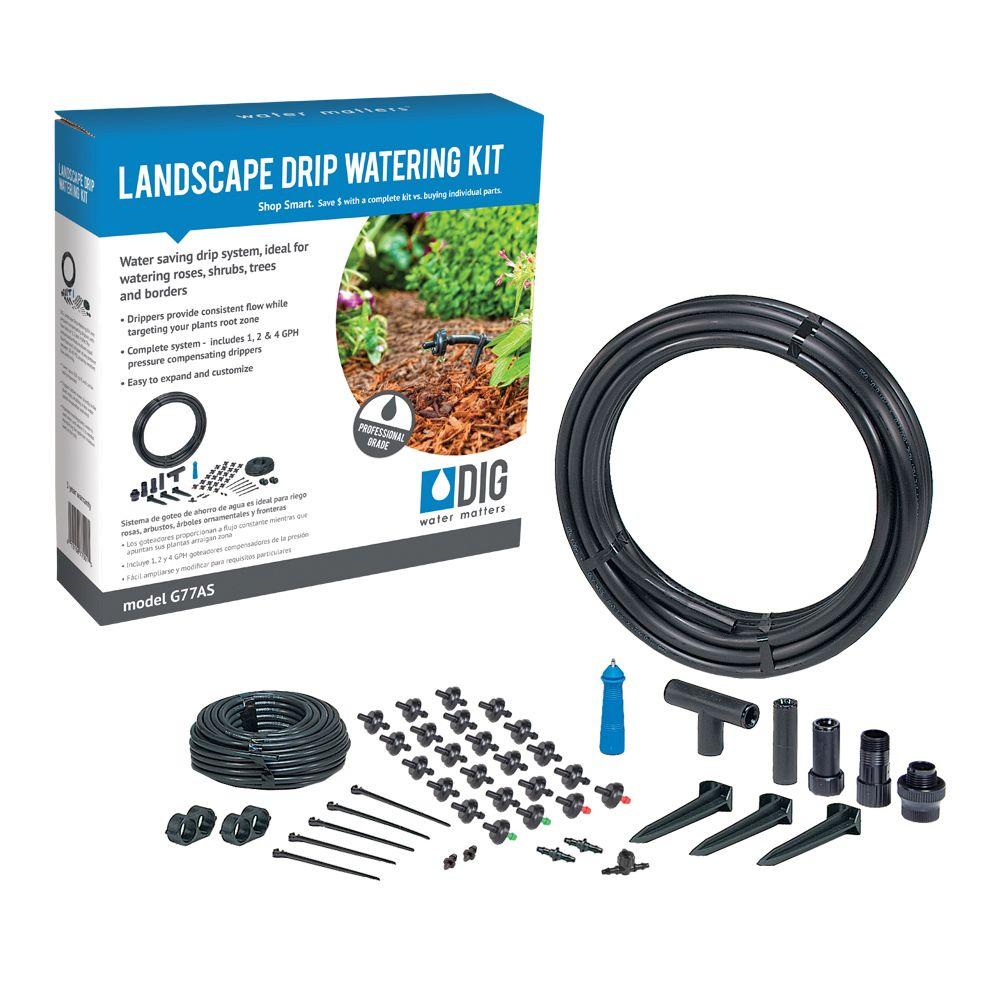
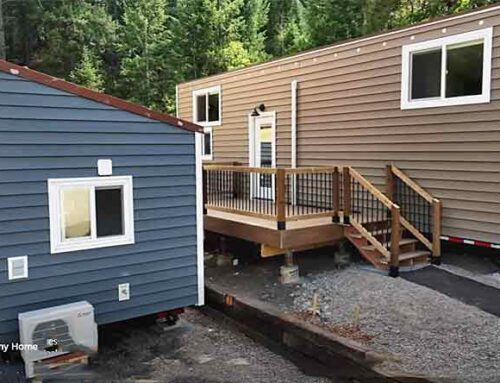
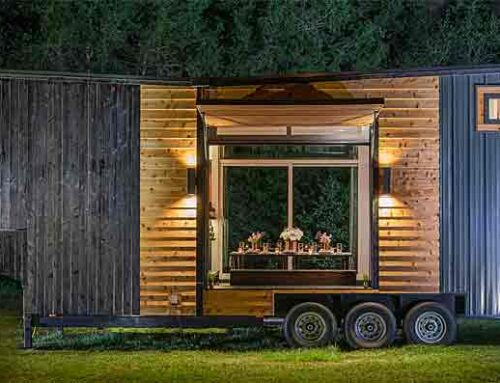
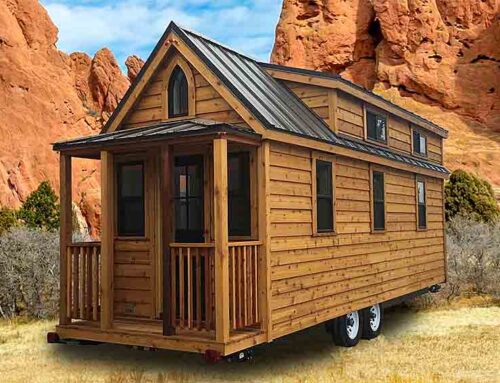
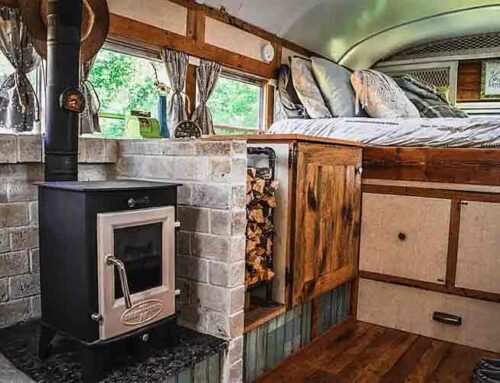
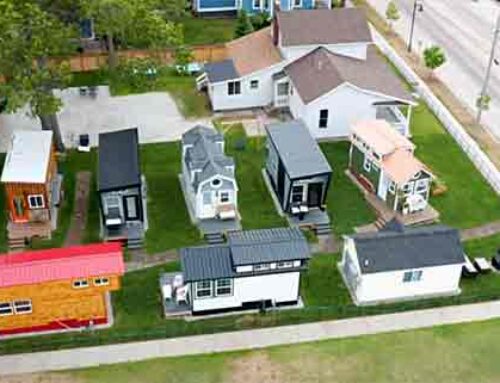
Leave A Comment